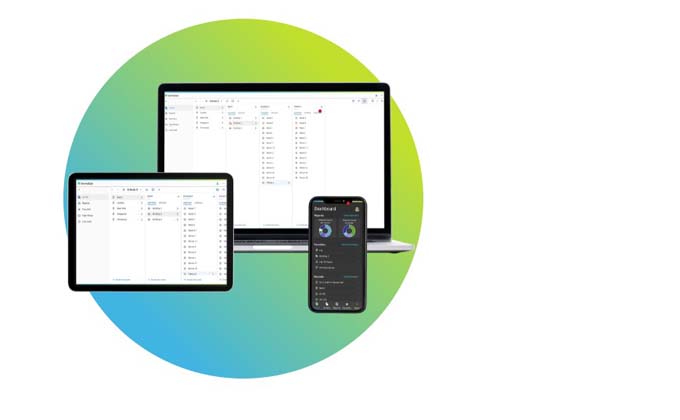Interactive map: municipalities can retrieve the share of renewable or imported energy
Swiss municipalities can now access online the proportion of renewable or imported energy used to heat their building stock and the amount of greenhouse gases generated as a result. For this purpose, the consulting company Navitas Consilium has published a new interactive tool.

The heating and hot water consumption of buildings alone accounted for nearly 40% of the country's total energy consumption in 2020. This means that buildings have an important role to play in achieving the goals of the Climate Strategy 2050 of CO2 neutrality, which was enacted by the Federal Council in January 2021. The effort required to achieve this goal is considerable, but there are several approaches to support and guide municipalities in their efforts to reduce the energy consumption of buildings as well as to improve the quality of the energy consumed.
Interactive map based on public data
Navitas Consilium is an energy and climate consultancy based in Valais and specialized in building level data processing. In combination with the public data of the Building and Housing Register (GWR) provided by the Federal Statistical Office, it is now possible to display the share of renewable and imported energy as well as the amount of greenhouse gas emitted during the heating of the building stock using maps per municipality. These results allow to provide a monitoring and comparison of the energy transition of the municipalities, with the possibility to visualize the progress through maps and indicators. Gabriel Ruiz, director of Navitas Consilium, recalls that the availability and quality of the data of the building and housing register are the responsibility of the municipalities. Therefore, he invites municipalities to update this information, adding, "We are able to regularly update our calculations to show the evolution of each municipality towards the global energy goals."
Share of renewable energy and local resources
In Switzerland, a renewable energy supply promotes local resources such as solar energy, heat pumps or Swiss firewood. The more local resources are used, the less the dependence on energy from abroad. Concerning the heat production for the heating of the buildings and the hot water, the imported production sources are to a large extent concentrated around fuel oil and gas. These sources currently provide more than 30% and 25% of the energy procurement of the building park. One of the published maps illustrates the share of renewable final energy for heating and hot water of the municipalities' building stock compared to the estimated total energy. The legend indicates the percentage of renewable energy.
Low share of renewable energy in densely populated areas
The interactive map shows, for example, that the most densely populated areas of the country, such as the Swiss Plateau, the Lake Geneva area, the Rohne Valley, Ticino or the Rhine Valley, have, overall, a lower percentage of renewable energy for the energy procurement of the building stock than the rest of the country. According to the available figures, the percentage in the 10 largest cities of the country does not exceed the 28% mark, while the value for the whole of Switzerland ranges between 2% and 84%.
Among the 10 largest cities in the country, Lausanne has the largest share of renewable energy (28%), followed by Zurich (24%) and Basel (24%). These results are largely due to extensive district heating networks. These networks are fundamental tools to cope with the energy transition, and therefore cities foresee large investments in this area in the coming years. In rural and mountainous areas, it seems easier to consider energy procurement that is more respectful of the environment and less dependent on energy importation. On the other hand, in densely populated areas, grid energies and individual fossil heating systems have been used because of their small footprint and high energy density. Another available map depicts this situation, where imported energy is mapped in relation to locally produced energy.
Greenhouse gas emissions generated by heat consumption in the building stock
With its Climate Strategy 2050, which is based on the Energy Perspectives 2050+, the Federal Council has decided to reduce GHG emissions to net zero (climate neutrality) by 2050 in order to meet the targets of the Paris Agreement. These targets apply to every GHG-emitting sector.
As mentioned above, the building stock represents a crucial role in the reduction of carbon emissions. The solution to this is a reduction of energy consumption coupled with the procurement of better quality energy with less GHG emissions. An interactive map showing the situation of GHG emissions8 in relation to the heat demand of the building stock can be consulted on the Navitas Consilium website.
Relationship between the share of renewable energy and greenhouse gas emissions
The GHG emissions in the procurement mix of the building stock are coupled to a high degree with the share of renewable energy. In the areas where renewable energy is used more, the GHG emissions are lower overall. Among the large cities in Switzerland, Bern emits the fewest GHGs in relation to the area of its building stock, followed by Zurich, Basel, Lausanne, and Biel. The cities that have a share of renewable energy below 10% generate higher GHG emissions overall.
As the maps published by Navitas Consilium show, conditions can vary greatly from one municipality to another, depending on the geographical environment and the climate neutrality measures implemented. Overall, the building stock of Swiss municipalities has some catching up to do before the goals of COP 26, to which Switzerland is a co-signatory, are achieved. These targets include zero carbon emissions and a share of 100% renewable energy for heat production.
The interactive map is available here: https://www.navitas-consilium.com/de/zero-carbone









